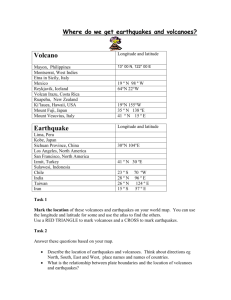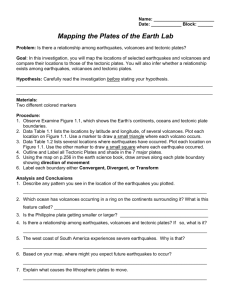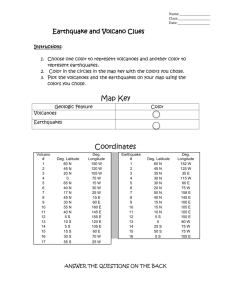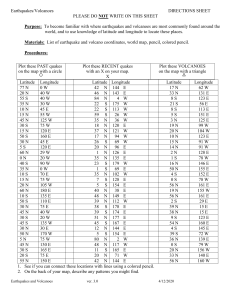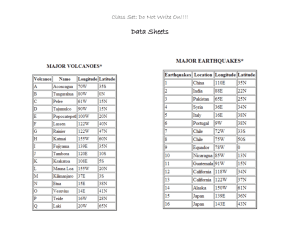First Semester Final Review Answer on a separate piece of paper
advertisement
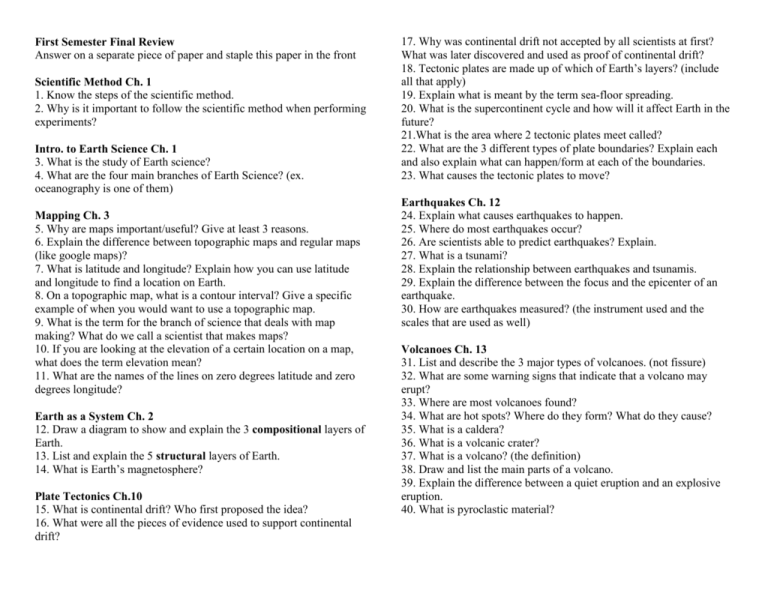
First Semester Final Review Answer on a separate piece of paper and staple this paper in the front Scientific Method Ch. 1 1. Know the steps of the scientific method. 2. Why is it important to follow the scientific method when performing experiments? Intro. to Earth Science Ch. 1 3. What is the study of Earth science? 4. What are the four main branches of Earth Science? (ex. oceanography is one of them) Mapping Ch. 3 5. Why are maps important/useful? Give at least 3 reasons. 6. Explain the difference between topographic maps and regular maps (like google maps)? 7. What is latitude and longitude? Explain how you can use latitude and longitude to find a location on Earth. 8. On a topographic map, what is a contour interval? Give a specific example of when you would want to use a topographic map. 9. What is the term for the branch of science that deals with map making? What do we call a scientist that makes maps? 10. If you are looking at the elevation of a certain location on a map, what does the term elevation mean? 11. What are the names of the lines on zero degrees latitude and zero degrees longitude? Earth as a System Ch. 2 12. Draw a diagram to show and explain the 3 compositional layers of Earth. 13. List and explain the 5 structural layers of Earth. 14. What is Earth’s magnetosphere? Plate Tectonics Ch.10 15. What is continental drift? Who first proposed the idea? 16. What were all the pieces of evidence used to support continental drift? 17. Why was continental drift not accepted by all scientists at first? What was later discovered and used as proof of continental drift? 18. Tectonic plates are made up of which of Earth’s layers? (include all that apply) 19. Explain what is meant by the term sea-floor spreading. 20. What is the supercontinent cycle and how will it affect Earth in the future? 21.What is the area where 2 tectonic plates meet called? 22. What are the 3 different types of plate boundaries? Explain each and also explain what can happen/form at each of the boundaries. 23. What causes the tectonic plates to move? Earthquakes Ch. 12 24. Explain what causes earthquakes to happen. 25. Where do most earthquakes occur? 26. Are scientists able to predict earthquakes? Explain. 27. What is a tsunami? 28. Explain the relationship between earthquakes and tsunamis. 29. Explain the difference between the focus and the epicenter of an earthquake. 30. How are earthquakes measured? (the instrument used and the scales that are used as well) Volcanoes Ch. 13 31. List and describe the 3 major types of volcanoes. (not fissure) 32. What are some warning signs that indicate that a volcano may erupt? 33. Where are most volcanoes found? 34. What are hot spots? Where do they form? What do they cause? 35. What is a caldera? 36. What is a volcanic crater? 37. What is a volcano? (the definition) 38. Draw and list the main parts of a volcano. 39. Explain the difference between a quiet eruption and an explosive eruption. 40. What is pyroclastic material?


